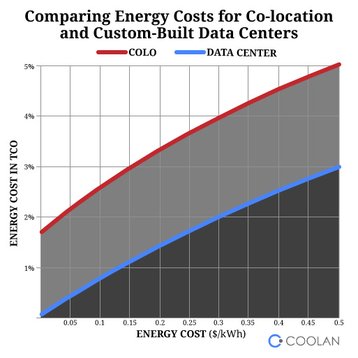Coolan has an interesting aim, to use crowdsourced reliability data on IT hardware, but while that project ramps up, the founder, former Facebook engineer Amir Michael, has found time to provide the answer to another set of questions - whether to build your own data center, use a colo, or move to the cloud.
Coolan’s big idea is to gather up a number of large end users who don’t mind sharing anonymized data about the performance of hardware in their data centers, via a tiny piece of agent software. In return, they and the rest of the industry will get a huge data set that should spot trends in the performance of specific hardware brands and devices, empowering users to buy better, and vendors to build better kit.
That project is still progressing in private, but we’re expecting more details later this year. In the meantime, Michael contacted us to discuss a side project - a total cost of ownership (TCO) model, which should help with those tricky build, buy or lease decisions that data center owners face.
Tackling costs
“It’s not easy to decide on the cost points,” said Michael, who is also a founder of the Open Compute Project. Deciding between in-house data centers and colocation or cloud is always going to be complex, involving other aspects of an organization’s business, but “this tackles the cost side of the house”.
The tool - a spreadsheet available through the Coolan blog, or directly here - lets users “go through and plug the numbers in, for what you pay for power and what the cost per server is,” says Michael.
There will be different tipping points making one option more favorable than the others, and there are a lot of variables, but Michael built the spreadsheet with help from a Google engineer and it will do a lot of the work for you, he told us.
There are two versions: one is blank waiting for the user’s own infrastructure data, while the other has been populated with information that Michael and colleagues researched.
The tool could be used by colo or cloud providers to position their offerings - and it has also had a lot of interest form hardware vendors, he said: “They want to understand how their products fit in, and what their pricing should be.”
The big question
No question is bigger than: “What cloud presence equates to a specific owned infrastructure footprint?” says Michael in the blog. The cloud has the edge in elastic computing and storage, availability, software tools, disaster recovery, and included labor, while owning your own infrastructure gives you control, architecture optimization, and the ability to scale.
Balancing that out is difficult, and needs to be done with the application owner, because “no one better understands the needs of the infrastructure and business.”
Once you have identified your options clearly, the model takes input that covers capex and opex for all the options, and presents its results in dollars.
Michael gives an example, comparing the power costs over 18 years, within a colocation service and an internal data center, each with 4000 compute servers and 625 storage servers consuming around 1.5MW, but with a PUE of 1.3 in the colo and 1.15 in the custom built facility.
Unsurprisingly, it finds that energy costs are higher in the colo (there is a markup) but Michael finds a surprise: “Even at $0.50/kWh, the cost of energy is still relatively small compared to total cost in both cases.”
And if your data center has a different make-up or different efficiency levels (or if you think your energy price will be different), you can plug those numbers in too.
“This TCO model is open and community-driven, so you can modify it to suit your purposes,” says Michael. ”We welcome you to share your changes and anything you discover during the process.”
Check out the model: here is a prepopulated version, and here is a blank one.


